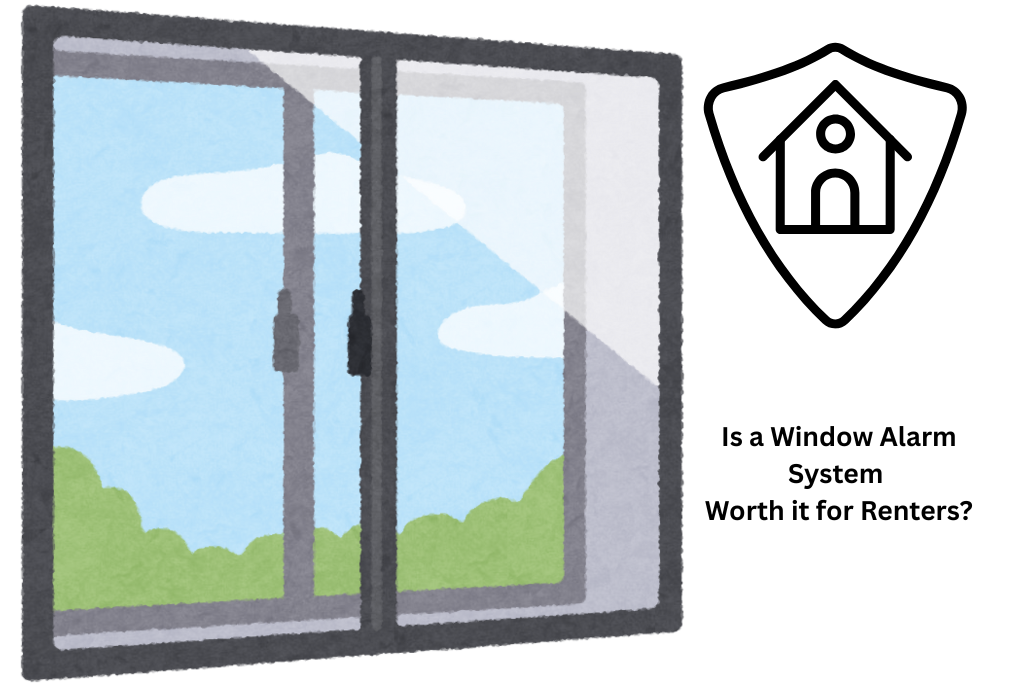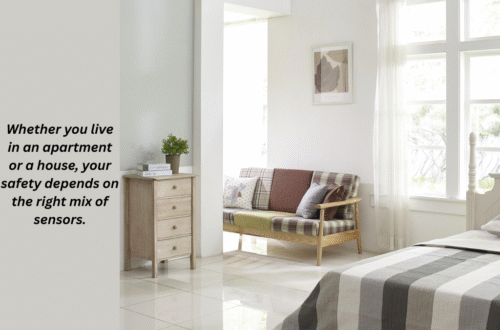
Is a Window Alarm System Worth it for Renters?
If you are renting a property that lacks a strong security system, you need monitoring devices that ensure your security. Especially when having elderly people or women living alone, the exposure to security threats increases. Also, pets and children can open doors and windows when they are unsupervised, and to protect them, you need to secure the entrances.
Doors get the primary focus in home security. They usually get the most attention, despite the fact tha nearly half of the break-ins happen through windows. According to statistics, burglars gain
- 26% access through back doors
- 24% access through back windows
- 8% access through front windows
In most cases, these entry points are not secured. Window sensor alarms are designed to minimize these dangers. These small and powerful devices detect break-ins the moment they happen. They instantly sound alarms or send you alerts before the intruder even steps inside.
Why Window Alarm Sensors Matter?
Windows are the neglected yet most vulnerable entry point. By installing alarm sensors, you can easily boost your home’s security. These sensors
- Detect suspicious activity or break-in attempts. They send an early warning even before the intruder gains entry.
- Work 24/7, whether you are home, asleep, or on vacation.
- Give insurance benefits, as some insurers offer discounts for homes with certified window sensors.
- Connect to the app and allow smart home integration.
- Give you peace of mind by keeping you and your family safe.
How Window Alarm Sensors Work?
Window alarm sensors use magnetic contact, vibration, or acoustic technology to operate. The sensor detects the change and triggers an alarm when the window is
- Opened
- Tampered
- The glass is broken
Most systems use two main parts:
- A magnetic contact is placed on the window frame.
- A sensor is attached to the moving part of the window.
When the window is closed, the circuit is complete. If someone tries to open the windows, the circus breaks and triggers the alarms. For extra protection, you can add glass-break sensors, which use sound or vibration detection to sense shattering glass even before entry occurs.
DIY vs. Professional Installation
Window alarm sensors are perfect for you if you love handling small devices. They are easily installed, and the devices are simple, which makes them perfect for renters of small apartments.
If you have a large home or you need a complex system, then ensure proper setup and integration with other devices. Therefore, you must go for professional installation and expert maintenance.
Preventing False Alarms
False alarms are not uncommon. To prevent this, regulate the sensor properly. In that way, the device will not detect minor vibrations or loud noises. If you have a wireless model, then check the batteries regularly. Place your sensor away from high-traffic areas.
Smart Integration
If you have a smart hub, then connect your device with the system to synchronize it. This will help you in monitoring your home security a better way. For example, if the sensor detects a break-in, the lights will turn on automatically. You will not only receive an alert on your phone, but there will also be a direct notification to emergency services.
Cost and Value
Window alarm sensors range from $10 to $50 each, depending on type and brand. Most home security kits include a few window sensors by default. Adding monitoring services costs extra but provides professional oversight 24/7, a small price for long-term peace of mind.
Types of Window Alarm Sensors
1. Magnetic Contact Sensors
These are the most common sensors. They are affordable and preferred by users for a standard home, where windows are mostly closed. These sensors trigger an alarm when the magnetic connection between the window and frame breaks.
2. Shock or Vibration Sensors
These sensors detect vibrations or any impact of the force to break the window. They are best for renters living on the ground level or with a basement window.
3. Glass-Break Detectors
These detectors are equipped with microphones. They detect the unique frequency of shattering glass. These sensors can monitor multiple windows in one area and are best for rooms with several windows or large glass panels.
4. Motion Detectors
These window sensors pick up movement inside the home. They offer an extra layer of security if an intruder bypasses the window sensors.
Wired vs. Wireless Sensors
Pros
| Wired Sensors | Wireless Sensors |
| Stable Connection | Easy DIY installation |
| Tamper resistant | Portable |
| Ideal for new buildings | Perfect for renters |
Cons
| Wired Sensors | Wireless Sensors |
| Costly installations | Battery maintenance needed |
| Less flexible | Faces signal interference |
| Harder to move |
Benefits of Installing Window Alarm Sensors
Window alarm systems offer instant intrusion detection. They send your alert the moment the window is tampered with or broken. Once the sensor is set, it sends an alert even when the window is opened. You will receive alerts on your smartphone when an activity is detected.
This system has pet-friendly operations. The sensors detect real threats and not your pet’s movements. Sensors have pinpoint accuracy, identifying exactly which window was breached for faster response and easier insurance claims.
Are Window Alarm Sensors Worth It?
Yes. The window alarm sensors are one of the most cost-effective ways to prevent intrusion. When paired with door sensors and glass break detectors, they will form a multi-layered defense system. Thus combined, they will give you real protection and peace of mind.
Conclusion
Renters usually prefer small yet smarter security investments. They want devices that not only offer simple installation but should also be reversible, in case they move out. A window alarm system is one of these investments that keep you safe at an affordable price.



